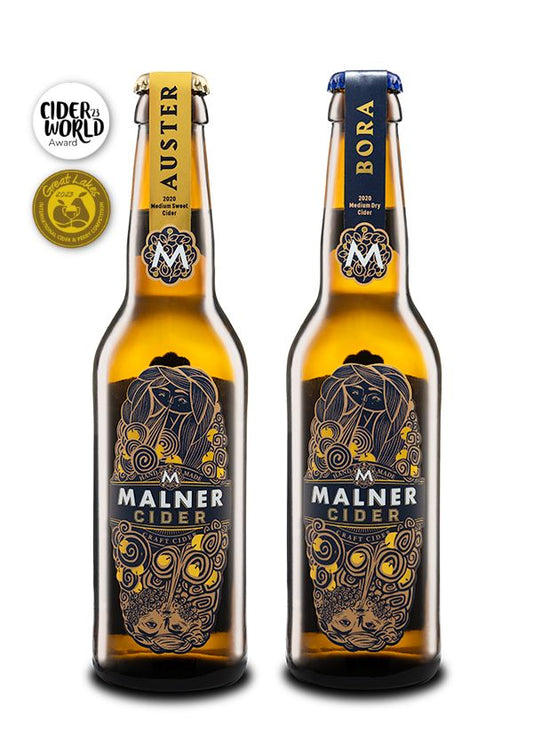"I'm sorry, but I don't like apples," or "I don't care for apples, thanks," and similar variations are something we fruit growers often hear.
As a fruit grower, or the descendant of fruit growers, who literally grew up in an orchard, you have the opportunity to explore and experience the wide range of flavors, shapes, colors, textures, and aromas that apples offer. Consequently, when you hear such statements, it sparks an inner challenge to showcase this diversity of flavors to as many people as possible. Especially when you notice that most stores only distinguish apples as "red apples" and "green apples," and if you're lucky, sometimes they'll add a regional label like "red Slovenian apples."
And what does all this have to do with cider? It's quite simple: the raw material is the essence of the product. And selecting the right raw material is a crucial part of cider production.
The diversity of apple flavors can be observed from several perspectives. We'll highlight those we find most important.
One perspective is location, position, soil, and climate (what winemakers call "terroir"), which significantly influence the taste and aroma of apples. Factors such as soil composition, temperature, rainfall, and sunlight all matter. Another perspective is how the trees are cultivated and cared for. Every fruit grower has their method for managing their trees, fertilizing, pruning, thinning, and especially determining the right time to harvest. The harvest might be early for storage apples, or later to allow apples to develop different sugars and aromas. Apples can be harvested all at once or selectively over time, ensuring that only ripe apples are picked. The third perspective, which we'll discuss in more detail, is apple varieties. It's hard to say how many apple varieties exist in the world, but there are certainly far more than you might think. Moreover, new varieties are created daily through crossbreeding to meet market demands (more resistant, redder, etc.). Some varieties are intended for intensive production, others for organic farming, some for traditional tall orchards, and others for processing. Above all, different varieties have varying levels of acidity, minerals, tannins, and aromas, and they can develop different sugar levels. Some varieties are best in September, others in December. Different varieties have varying flesh hardness, texture, size, some have more water content, and others dry out your mouth. Yes, there are apples that are not pleasant for fresh consumption.
Just as the grape variety is crucial in winemaking, the same holds true for cider. And just as no one makes wine from table grapes, the best ciders aren't made from table apples (also called culinary or dessert apples). The best cider makers focus on varieties specialized for cider production. In countries with a more developed cider industry (such as England, Spain, France), research institutions study old and cross new varieties for cider production. These varieties are usually more bitter, high in tannins, acids, and sugars. Based on the ratio of these three characteristics, cider apples and ciders are categorized around the world. Our ancestors understood this too. As Boštjan Godec (Agricultural Institute of Slovenia) once said, "our traditional Slovenian apple wines were made from 60% Bobovec, 30% Štajerski Mošancelj, and 10% Lesnika (a wild apple variety with small and bitter fruits) to achieve the best apple wine flavor."
The choice of apple varieties in cider production depends on the flavor the producer wants to achieve and, of course, what is available. At Malner, we are also committed to exploring the characteristics of different varieties. We test English specialized cider varieties, our old varieties, and apples common in integrated production (dessert apples). We see apples as a fruit with tremendous potential, offering a wide range of flavors and possibilities. That's why it matters what kind of apples we eat, where they grew, and when they were harvested. We believe that there is a flavor of apple and cider for everyone that can become their favorite.









